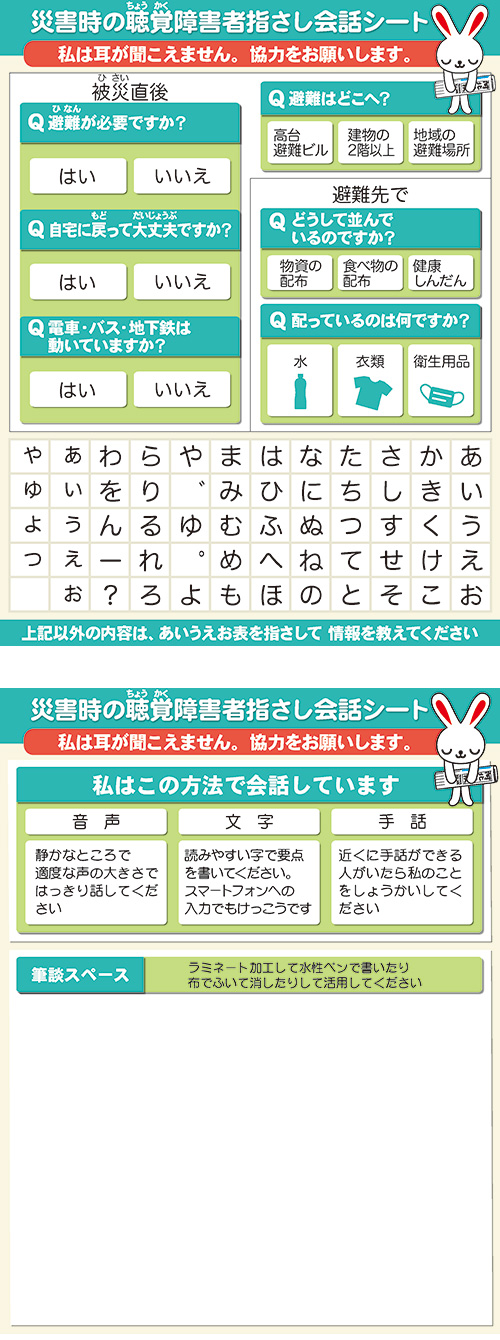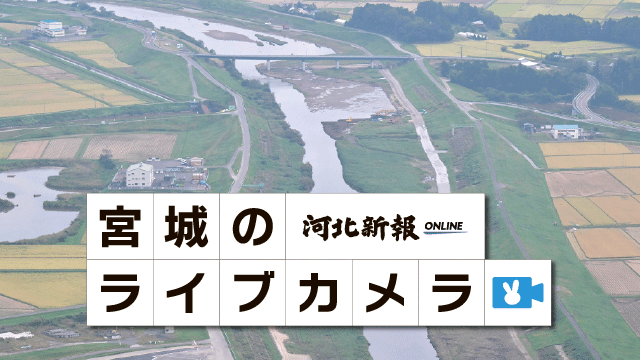Part 7: Assistance (4-End) Neighbors / The Power of Everyday Relationships Comes Through




After the Great Hanshin Earthquake of 1995, it was the neighbors who rescued victims from the rubble of collapsed buildings. In the same way, during the Great East Japan Earthquake, a certain town demonstrated the power of “the folks next door” in helping the vulnerable evacuate.
Hideki Saito (45), unemployed, lived with his mother (75), father (76), and grandmother (96) in Hachimanch?, Ishinomaki City, along the Old Kitakami River. His father is physically handicapped due to a stroke, and his grandmother is completely bedridden. After the violent shocks subsided that day, he and his mother attempted to evacuate his father and grandmother.
As he made preparations, he was suddenly struck by doubt. Could he and his elderly mother really move the other two to safety on their own? Just then, someone appeared in the doorway. It was a man from the neighborhood. ”They put out a tsunami warning. Let's get outta here together!” Saito instantly asked for his help.
They set out for Minato Elementary School, about 180 meters ahead. The man pushed Saito 's grandmother in her wheelchair while Saito brought up the rear, carrying bags full of clothes and his grandmother's adult diapers under both arms.
Traffic was at a standstill, and the sidewalk just as crowded. Saito soon ran into an acquaintance in the volunteer fire corps, as well as an old classmate, who jumped in to assist his parents.
They reached Minato Elementary just after 3 p.m. Thirty minutes later, muddy water rushed into their neighborhood.
The man who came to the door was a regional contact from the “disaster preparedness network” that the city set up in each neighborhood association. He was responsible for confirming the safety of the residents and helping them to evacuate. The network shared information on the residents who needed assistance, and had two people assigned to every vulnerable person.
“The neighborhood empties out in the daytime when people go to work.” “The population is continuing to age rapidly.” When the disaster preparedness network was set up in the district in 2004, neighborhood association members and welfare commissioners found the lack of manpower problematic.
They came up with the solution to limit their efforts to those who could not evacuate without help, such as bedridden seniors. They asked healthy seniors to evacuate on their own, explaining, “If you evacuate by yourself, you could help us make sure everyone gets saved.”
For the neighborhood contacts, they mainly chose residents who were in the region during the day, such as self-employed people and retirees. The thoughts that were put in these efforts to increase the effectiveness of the network paid off when the earthquake hit.
Of the 14 people assigned help, who were in the district at the time of the quake, four were saved by the network contacts who ran to their homes. Besides two who were unfortunately lost, the rest escaped with the help of family and neighbors, or by climbing to the second floor of their homes.
On the other hand, throughout the city, 337 people who were subject to assistance by the network became victims of the disaster. Even with similar arrangements, the effectiveness of preparation differs according to the neighborhood.
Hachimancho has been a close-knit residential area for a long time. There are festivals at the local Hachiman Shrine every spring and fall, and a bon-odori dance every summer. Everyone takes part in an annual emergency drill, and until about five years before the earthquake, there was an annual cherry tree planting event on the hills behind the town. The residents had created many opportunities for community interaction and strengthening their attachment to the neighborhood.
Takashi Arisaka (63), the district welfare commissioner, sees it this way. “It's sad that we lost some people, but we also saw many cases where our residents were able to take on different roles and save their elderly neighbors. The emergency preparedness network works when it’s built on existing connections in the neighborhood.”
◎A promise becomes a lifeline / Residents with requests for community reconstruction
For the vulnerable people, the support of those around them is vital if they are to evacuate in a large-scale disaster. “If something happens, please help me.” Reaching out to the surrounding community from day one can form connections that become lifelines in an emergency.
At the Ikkeijima Nursery School in Shiomicho, Kesennuma City, 71 children from infants to six-year-olds were snoozing peacefully. It was just during naptime that the Great East Japan Earthquake struck.
The 12 staff, all women, split up and carried the sleepy-eyed children out to the yard. Soothing the little ones, they started preparing to evacuate to the Kesennuma Central Community Center.
That was when they heard men's voices ring out, “How can we help?” Two employees from “Ashikaga Honten,” a fishery processing plant that stood diagonally across from the nursery, had come to their aid.
In preparation for an earthquake offshore Miyagi Prefecture, the nursery had been inviting the plant to participate in their twice-yearly general evacuation drills. Each time, two plant employees had joined the drill and learned the procedures for evacuation. They had promised to send help in the event of a real emergency.
Takashi Fujimoto (36) was one of the Ashikaga employees who had taken part in these drills. He lined up to evacuate with the children, keeping a sharp eye out for any who strayed from the group. He jumped in wherever his physical strength was needed, lifting strollers caught on uneven ground and carrying children to the third floor of the community center.
The tsunami temporarily isolated the community center, where around 450 people had evacuated. By the third day, however, everyone was rescued without incident.
Koharu Hayashi (61), then director of the nursery, recalls, “Just having the two men there during evacuation was reassuring.”
There is also a movement to reflect the perspectives of the vulnerable in the process of rebuilding the town.
In Okaido District, Ishinomaki City, families and other caregivers of the elderly and handicapped formed a group called “Tanpopo Society.” The president, Rie Nitta (43), has a 14-year-old daughter with a severe disorder of consciousness. The neighborhood took heavy damage from the tsunami, but her whole family managed to evacuate to higher ground two kilometers ahead, including her husband who was at home. They had moved early enough to avoid heavy traffic.
In April 2013, they finished repairs on their home and moved out of temporary housing. There is nothing between the house and the ocean to block an incoming tsunami. They want to escape by car, but traffic congestion would be worrisome.
At their monthly meeting, Tanpopo Society members went over the evacuation experiences of their families, and worked out a list of requests for the local administration. “I would like them to make tsunami evacuation buildings and towers with wheelchair ramps.” “We need welfare evacuation shelters as well.”
In Nitta’s neighborhood, many residences are still dark and abandoned. Once residents begin returning in earnest, she hopes to bring Tanpopo Society and the neighborhood association together, to hold a workshop where participants could consider problems with evacuation that take into account the most vulnerable residents.
“Those who need assistance and their families should not expect to leave everything to the administration or the community,” says Nitta. “A town that's safe for its most vulnerable residents is safer for everyone else, too. We want to keep speaking out to make this a reality.
Translated by Cecillia Caride
June 21, 2013 (Fri.)
[Japanese] http://www.kahoku.co.jp/special/spe1114/20130621_01.html
 朝刊・夕刊
朝刊・夕刊 記事を探す
記事を探す FAQ
FAQ















